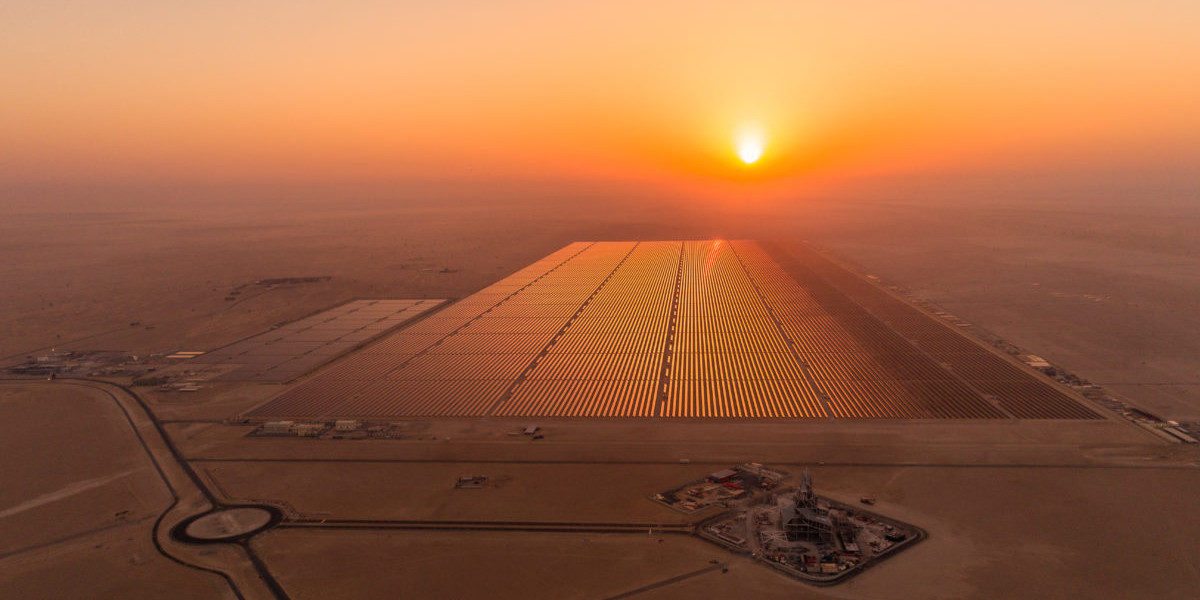The MENA region has one of the world’s highest levels of solar irradiance. Mesia has highlighted the most important achievements of key regional solar markets over the past year in its latest report, with a look at national solar goals up to 2030.
Algeria added 59 MW of new solar capacity in 2022, up from 12 MW in 2021. The country inaugurated a new PV module factory with an annual capacity of 200 MW. It manufactures p-type PERC M3 modules with outputs ranging between 405 W and 415 W. This year, it will start producing M10 and M12 sizes, according to Mesia.
Bahrain continues to run its net metering scheme, but it still has yet to implement a feed-in-tariff (FIT) scheme and renewable energy mandate for new buildings, as outlined in its 2017 renewable energy legislation.
In Egypt, renewable energy reached 20% of the electricity mix by the end of 2022, but solar accounted for just 2% of the total. The country’s net metering scheme is expected to support the expansion of distributed PV going forward, particularly utility-scale projects for onsite consumption in the agriculture, cement, and commercial sectors, Mesia said.
Iran added 8.29 MW of rooftop solar in 2022, reaching a cumulative solar installed capacity of 519 MW. The Iranian government has revoked power purchase agreements with private developers of utility-scale projects. Going forward, the commissioning of large-scale PV projects will only be organized through government tenders.
Jordan is expected to introduce energy storage legislation in 2023. It currently has 1,498 MW of commercial PV projects under PPAs and 1,027 MW of small-scale installations under net metering and wheeling schemes. It will start operating an electric connection with Iraq in 2023, initially for 150 MW of electricity, with a potential capacity expansion to 900 MW in the future.
Lebanon experienced “exponential growth in the solar PV and [battery energy storage] segments” in 2022, according to Mesia. However, the country does not keep any official records of its installed solar capacity. The Lebanese government approved a distributed renewable energy production law in March, allowing renewable energy producers to directly sell electricity to end users, distributors, or other electricity suppliers through on-grid or off-grid PPAs.
Morocco’s cumulative solar capacity reached 830 MW in 2022. The Moroccan commercial and industrial (C&I) market is expected to take shape in the years to come, following the passage of a long-awaited law allowing businesses to connect their renewable sources to the medium-voltage grid.
Oman commissioned its largest PV park in 2022, the Ibri Solar Power Plant with a capacity of 500 MW. Commissioning of two other solar plants with a cumulative capacity of 500 MW is scheduled for the end of 2023 and the beginning of 2024.
Qatar plans to introduce net metering regulation in 2023. The 800 MW Al Kharsaah Solar Power Plant was inaugurated in October 2022.
Saudi Arabia expects to have a 40 GW solar market by 2030, with growth to be driven by auctions, unsolicited bilateral utility contracts, corporate PPAs, and state-owned projects. A 2 GW solar park is scheduled to come online by the end of 2025.
Sudan’s cumulative PV capacity has reached 200 MW according to the latest official statistics, but “the number is expected to be much higher, given that most installed projects are off-grid,” according to Mesia. In November, the Sudanese government announced a new net-metering scheme for projects with a capacity under 1 MW. The country’s largest solar plant was commissioned last year, with a capacity of 54 MW.
Tunisia commissioned MENA’s first floating solar plant in June 2022, according to the report. The 200 kW installation is located in Tunis.
Turkey started updating its storage legislation in 2022 and is expected to pass it soon, said Mesia. Last year it started mandating all buildings with construction areas of more than 5,000 square meters to generate at least 5% of their energy use from solar or wind.
In 2022, the United Arab Emirates introduced regulation to increase the percentage of renewables in the country’s electricity mix to 60% by 2035. “These regulations are the first legally binding regulatory framework for clean and renewable energy in the electricity sector in the Middle East,” concluded Mesia.
This content is protected by copyright and may not be reused. If you want to cooperate with us and would like to reuse some of our content, please contact: editors@pv-magazine.com.



By submitting this form you agree to pv magazine using your data for the purposes of publishing your comment.
Your personal data will only be disclosed or otherwise transmitted to third parties for the purposes of spam filtering or if this is necessary for technical maintenance of the website. Any other transfer to third parties will not take place unless this is justified on the basis of applicable data protection regulations or if pv magazine is legally obliged to do so.
You may revoke this consent at any time with effect for the future, in which case your personal data will be deleted immediately. Otherwise, your data will be deleted if pv magazine has processed your request or the purpose of data storage is fulfilled.
Further information on data privacy can be found in our Data Protection Policy.